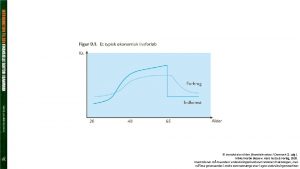Er lgerne klar til den digitale revolution Copyrights












- Slides: 12

Er lægerne klar til den digitale revolution? Copyrights apply

algoritme, forskrift for en følge af beregningstrin, der fra et problems data fører til resultat. Forskriften skal være utvetydig og bestå af grundoperationer, der umiddelbart kan udføres. Copyrights apply Ordet algoritme kommer af eng. algorithm, fra lat. algorismus, fra arab. al. Khwarizmi, arab. matematiker; formen med tm skyldes association med gr. arithmos 'ta l'.

Copyrights apply

Copyrights apply

Copyrights apply

Copyrights apply

Copyrights apply

Copyrights apply

Discrimination — Discrimination describes the accuracy of a given prediction (ie, its ability to discriminate between survivors and non survivors). As an example, if a scoring instrument predicts a mortality of 90 percent, discrimination is perfect if the observed mortality is 90 percent. Calibration — Calibration describes how the instrument performs over a wide range of predicted mortalities (ie, the agreement between observed and expected numbers of survivors and non survivors across all probabilities of death). Calibration is sensitive to alterations in case-mix and patient care/interventions. Copyrights apply

No single instrument has convincing or proven superiority to another in its ability to predict death. When choosing a predictive scoring system, it is important to use a score that was developed and validated recently and one that accurately predicts the outcomes in the population of interest (institutionally, regionally, or nationally) (see 'Comparative efficacy' below). Other factors that should be taken into consideration include feasibility, ease of use, and cost (see 'Ease of use' below and 'Availability' below). Importantly, once chosen, the instrument should be updated periodically to reflect contemporary practice and patient demographics, thereby avoiding deterioration in performance over time (ie, worsening discrimination and calibration). Copyrights apply

Although predictive scores are of little assistance to the management of individual patients, they can be used by researchers in clinical trials to ensure similar baseline risks between comparative groups, and by institutions and healthcare administrative officials to examine ICU performance. Predictive scoring systems have important limitations including poor generalizability, deterioration with time, and possibly leadtime bias. Copyrights apply

Copyrights apply
 I en natt så klar og kald
I en natt så klar og kald Den nye karakterskala i forhold til den gamle
Den nye karakterskala i forhold til den gamle Den gode den onde den grusomme
Den gode den onde den grusomme Den gode den onde den grusomme musik
Den gode den onde den grusomme musik Den gode den onde og den grusomme
Den gode den onde og den grusomme Den digitale arbejdsplads
Den digitale arbejdsplads Copyrights
Copyrights Copyrights
Copyrights Copyrights
Copyrights Copyrights
Copyrights Copyrights
Copyrights Til haqida ma'ruza
Til haqida ma'ruza Introduktion til den finansielle sektor i danmark
Introduktion til den finansielle sektor i danmark























